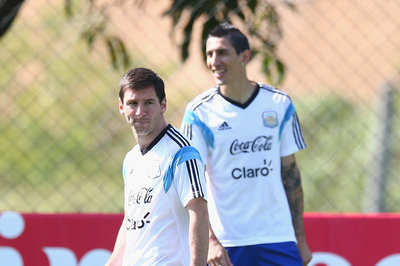It's NASCAR's responsibility to do everything in its power to make a dangerous sport as safe as possible. Why did it take a frightening accident Saturday at Daytona to make everyone involved remember just that?
DAYTONA BEACH, Fla. -- The parent company of Daytona International Speedway, International Speedway Corp., is spending $400 million to give a major facelift to the 56-year-old track.
Improvements include a widened concourse, additional suites, a renovated front stretch and a brand-new front grandstand. The upgrades, coined "Daytona Rising," will transform the speedway into what track officials like to say is a motor sports area; a massive overhaul and one quite impressive in its scope.
But despite the sizeable investment and the great benefit and comfort provided to fans, before Saturday night what "Daytona Rising" did not do was make the track safe for drivers. And that's an unmistakable shame.
Before Saturday night, Daytona and by extension, NASCAR, failed. Failing to fulfill the obligation it has to make racing as safe as possible for the competitors; a fact bared witness during that afternoon's Xfinity Series race.
That was when Kyle Busch spun out of the front stretch tri-oval and collided nearly head-on with the inside wall. The hit was the very definition of brutal. So much so Busch sustained a compound fracture of the right lower leg and a mid-foot fracture of his left foot. Injuries which will knock him out of Sunday's Daytona 500 and possibly the majority of the 2015 season.
What's inexcusable is the wall Busch contacted was not covered by a protective barrier. Why? Because officials for Daytona and NASCAR feel the installation of SAFER barriers at that particular portion of the track are not needed? Why because studies have shown drivers are less likely to strike the wall in that section. Therefore there's no need to spend the money.
That's right, a track in the midst of a $400 million remodel couldn't splurge a few dollars to further protect its drivers because a study said it was unlikely. Go ahead and try to wrap your head around that justification.
Someone should ask Busch about those studies? Oh, that's right he's in the hospital, injured, because he hit an area drivers a study says he wasn't supposed to hit. Not only is that mind numbing, it's insulting. And more than anything, it isn't right.
Maybe the use of a SAFER barrier wouldn't have prevented Busch from breaking his leg, but does that matter? Without a doubt his chances of escaping uninjured would have increased. Just as Denny Hamlin may not have broken his back when in 2013 he pounded an unprotected wall at Auto Club Speedway.
Because racing is inherently dangerous, every step should be taken to minimize the risks, especially for sport raking in millions upon millions in revenue.
Thankfully, Daytona president Joie Chitwood III has come to his senses. Unfortunately all it took was for Busch breaking his leg to realize how asinine it was not to have protected walls on every square inch of the track. Study be dammed, if a driver isn't likely to wreck there or not.
"The Daytona International Speedway did not live up to its responsibility today," Chitwood said. "We should have had a SAFER barrier there today, we did not. We're going to fix that. We're going to fix that right now.
"We don't want to see any competitors injured here. We have to fix that. We can't allow this to happen again."
Beginning immediately Daytona is working to cover the wall Busch hit in time for the Daytona 500. And when the checkered flag waves Sunday, track workers will go about installing SAFER barriers on every wall within the speedway's confines -- going forward if a wall can be touched by a race car, it will have a protective barrier.
"This is not going to happen again," Chitwood said. "We're going to live up to our responsibility."
Credit Chitwood for accepting the responsibility he has to make his track as safe as possible. Now the onus falls on NASCAR to force change everywhere it stages a race.
If a race hosting a national series event is reluctant to install SAFER barriers due to cost or other reasons, then the sanctioning body pulls its date. Think that will send the message?
"We always have those conversations with the racetracks," NASCAR executive vice president Steve O'Donnell said. "The racetracks know that and work together with us on the SAFER barrier recommendations. "We will accelerate those talks with the tracks. We want this sport to be as safe as possible for not only our drivers, but everyone who participates in the sport and the race fans as well."
NASCAR preaches safety as its foremost concern. While that's all well and good, its actions otherwise speak volumes. What occurred Saturday isn't acceptable. And it certainly was preventable.
from SBNation.com - All Posts http://ift.tt/1Ggq1il








0 commentaires:
Enregistrer un commentaire